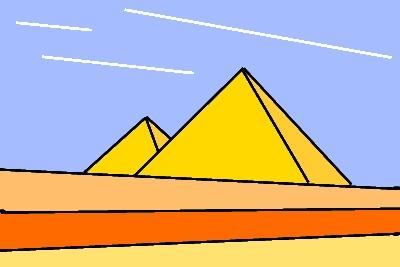Painting between the lines
In abstract and computer generated art, a real object can be represented by a simplified set of lines. Can you create a picture using mathematical instructions?
Problem
In abstract or computer generated art, a real object is often represented by a simplified set of shapes, lines or curves.
Take a look at the picture below:


If you wanted to describe mathematically the line segments used to draw this picture, all you would need to do is decide where to put the axes and then work out the equations of all the straight lines.
Here is a set of instructions to create an abstract representation of another well known landmark (download as a Word or PDF file).
Now try this for yourself - choose an image, perhaps a photograph of a famous location, or a famous painting.
Think how it might be broken down into shapes or segments of lines.
Can you create a set of instructions for your picture?
Once you have created your instructions, give them to a friend to follow.
Can you devise a way to describe mathematically each region so that you can give instructions for colouring your image?
You may wish to use curves as well as straight lines. To explore abstract art using more complicated mathematical functions, take a look at Painting by Functions.
Have a go at creating your image using a graphing software package such as Geogebra.
Please send us any of your creations (together with your instructions).
The pyramids photograph was taken by Przemyslaw "Blueshade" Idzkiewicz and is reproduced under a Creative Commons license.
Getting Started
You may find it useful to explore the equations of straight lines using the interactivity in Parallel Lines.
Student Solutions
Here is the well-known landmark given by the instructions:

Teachers' Resources
Why do this problem?
Possible approach
Key questions
Possible extension
Painting by Functions uses the same ideas but looks at the use of more complicated functions, transformation of functions and composition of functions, for learners who have met these ideas.
Possible support
Learners could begin by using transparencies or tracing paper over their image to draw on a set of axes and straight lines to represent the picture. Alternatively, a computer image manipulation package with a "layers" facility could be used, and the resulting abstract representation could be printed off onto graph paper.
